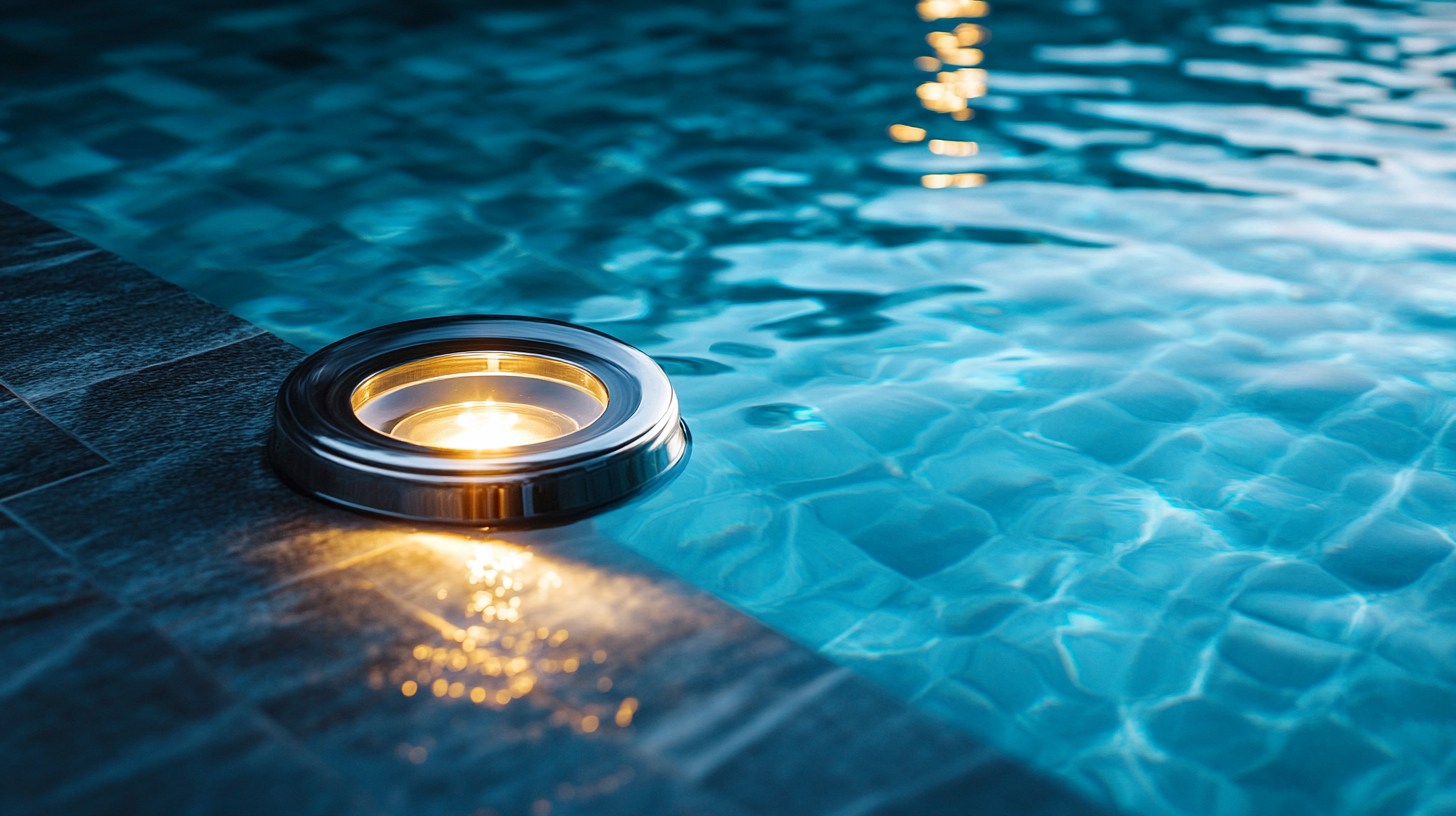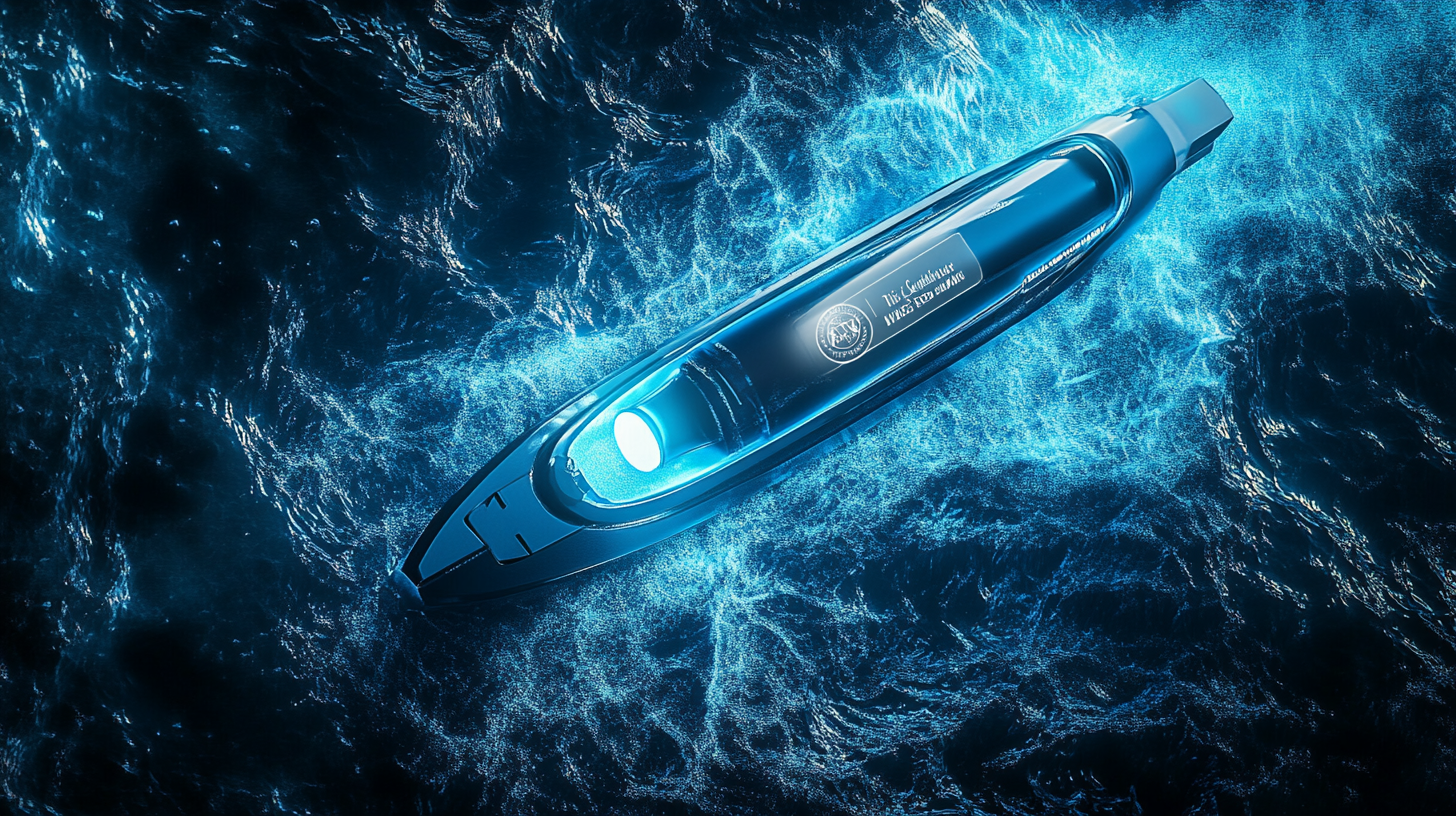Safe voltage levels for underwater pool lights
When it comes to keeping swimmers safe, understanding voltage safety in pool lighting is crucial. Since electricity and water are not exactly the best combination, it’s essential that underwater pool lights are designed and installed to operate at safe voltage levels. The risk of electrical shock is greatly reduced when proper safety standards are met, assuring that everyone can enjoy the pool without worry.
Most standard residential pool lights operate at low voltage, typically around 12V. This low voltage is inherently safer for underwater installations compared to higher voltage systems like those used in standard household wiring. But why is this so important? The simple answer: lower voltage means less risk of harm. A low-voltage system minimizes the danger if something goes wrong, providing peace of mind for pool owners.
In addition to voltage, the quality of the pool lights and their installation process play a big role in safety. Submerged lights should always be encased in durable housing materials that are resistant to water intrusion. This extra layer of protection ensures that no electrical components get exposed to water – one of the key factors in maintaining a safe and enjoyable swimming environment.
Whether you’re installing new lights or upgrading existing fixtures, understanding and adhering to safe voltage levels is something every pool owner should prioritize.
Common voltage options for underwater lights
When selecting pool lights, you’ll come across a few common voltage options designed for underwater use. The most popular choices tend to be either 12V or 120V systems. Each comes with its own considerations for safety, lighting quality, and installation requirements, so knowing which one is best suited for your pool will make a big difference in your overall safety and satisfaction.
12V, often referred to as “low voltage,” is by far the most recommended option for residential pools when it comes to both safety and performance. 12V systems are considered low voltage for a reason—they greatly reduce the risk of electric shock, even if something were to go wrong. Because it’s a direct current (DC) system, and the voltage is significantly lower than your standard household 120V, the potential danger is much lower. These lights are affordable, easy to install, and compatible with transformers, which we’ll get into in the next section (spoiler alert: they help make everything much safer!).
However, it’s important to note that 120V pool lights also exist, particularly in commercial or larger pool settings. While these lights provide a strong and steady lighting source, they come with a higher safety risk due to the higher voltage running through your pool lighting system. With proper installation and the right safety measures in place, 120V systems can still be used safely, but they require greater attention to detail during installation and regular maintenance checks to ensure there is no risk of electrical faults. Additionally, these systems may require a more complex installation process, making it vital to work with a licensed electrician who specializes in pool lighting.
Ultimately, when weighing the pros and cons of different voltage options for your underwater pool lights, it’s essential to consider the pool’s specific needs and ensure compliance with local electrical codes and safety standards. In most cases, 12V systems will give pool owners a balance of safety and user-friendliness, while 120V systems should be selected with caution, particularly for residential pools.
Electrical codes and safety regulations for pools
To ensure safe operation of underwater pool lights, it’s essential to follow electrical codes and safety regulations meticulously. These codes not only safeguard the technical aspects of lighting installations but also ensure the well-being of anyone using the pool. The primary objective of such regulations is to prevent electrical shock hazards and minimize the chances of dangerous malfunctions, offering a pleasant and worry-free swimming experience.
In the United States, the National Electrical Code (NEC) is the go-to source for guidelines on electrical systems, including pool lighting installations. According to the NEC, pool lights must typically operate at a maximum of 15 volts for low-voltage installations when submerged in water. This ensures that the safe voltage levels necessary for underwater situations are adhered to, dramatically lowering the risk of electrical hazards. Beyond the NEC, local governments may also have their own additional regulations, so be sure to check with local inspectors as well before proceeding with any installation.
One particularly important NEC guideline deals with Ground Fault Circuit Interrupters (GFCI). GFCI protections are required for all underwater pool lights, regardless of their voltage. Why? Because a GFCI can detect even the slightest electrical current leakage and will immediately cut off power to the lighting system, preventing any potential shocks. It’s a critical line of defense for homeowners and swimmers alike.
Additionally, conduit requirements ensure any wiring leading to a pool light is properly protected. These electrical conduits typically need to be PVC or metal based, both for their waterproofing capabilities and their ability to shield the wires from external damage, ensuring safe operation. The NEC also advises that lights should be installed at least 18 inches below the surface of the water to reduce the possibility of accidental exposure to electrical components if someone wants to service the lights or adjust them in any way.
In open bodies of water like pools, bonding is another stipulation to prevent potential hazards. Bonding involves connecting all the pool’s metallic elements—such as ladders, light niches, and fencing—to create a uniform electrical path. This balances any stray voltages across the structure, eliminating any difference in electrical potential, which could otherwise lead to shocks.
It’s worth noting that some states or municipalities may impose even stricter guidelines than the national standards, particularly for public and commercial swimming pools. For instance, in some areas, even low-voltage pool systems need to be regularly inspected by licensed professionals to ensure continuing code compliance. Governmental bodies take pool safety seriously and demand diligence when ensuring that pool lights operate at safe voltage levels.
Whether you’re setting up lighting for a personal backyard pool or a commercial aquatic facility, the adherence to electrical codes and safety regulations isn’t just recommended—it’s required for safety and peace of mind. Navigating these codes may seem complex, which is why hiring a licensed electrician who understands both the NEC and local regulations is critical to a smooth, safe, and compliant installation of your pool lights.
The role of transformers in reducing risk
Transformers play a critical role in enhancing the safety of underwater pool lights by reducing high electrical voltages down to safer, low-voltage levels. While power typically enters most homes at 120V or even 240V, transformers step down this voltage to lower levels suitable for wet environments, such as around a swimming pool. This step is crucial, as low-voltage systems, typically 12V, are far less likely to pose a significant electrical hazard, even if the system develops a fault. Transformers thus serve as a primary safety mechanism, ensuring the current powering the underwater pool lights operates within safe voltage levels.
One of the reasons 12V lighting systems are common in pools is the protective role of transformers. The transformer, often located at a distance from the pool area, converts the higher-voltage electricity supplied by your household into a much safer, lower-voltage current before it ever reaches the pool lights. This allows the electrical circuit in and around the water to maintain an added layer of safety. It’s important to note that most transformers used in pool lighting are designed specifically for outdoor and pool environments, equipped with features like weatherproof housing and proper insulation.
Without a transformer, any faults or issues in the electrical system could result in potentially dangerous high voltages being present underwater. For instance, if there’s a breach in the light fixture or wiring, a system without proper voltage conversion could expose swimmers to hazardous voltages. By ensuring the circuit is converted to a low-voltage one through the transformer, the system reduces the risk of severe electrical shock and significantly lowers the potential for water becoming an electrical conductor.
In terms of installation, transformers should always be placed in a dry, accessible location, sheltered from direct water exposure or high humidity. They are often installed near breaker panels but far enough from direct contact with any water sources. In addition, all transformers that power underwater pool lights must come with adequate circuit protection, such as Ground Fault Circuit Interrupters (GFCIs). This, combined with the transformer’s role in stepping down voltage, ensures that the entire setup functions safely within the expected safe voltage levels for underwater pool lighting.
While the transformer itself is a significant part of the electrical system safety net, its output should also be regularly checked to ensure it’s working properly. If a transformer malfunctions and fails to correctly lower the voltage, the system could be compromised, creating the very risks it’s meant to mitigate. Regular inspections of the transformer and associated electrical components are necessary to ensure that pool lights remain at safe operational levels year-round. Additionally, only transformers that meet safety certifications should be used to guarantee compliance with both national and local pool safety regulations.
In cases where a higher voltage is unavoidable, as seen in commercial pools where 120V lights might still be used, transformers often serve as intermediary devices, using multiple steps to control and manage the voltage safely. Even in these scenarios, the installation must ensure proper grounding and bonding to minimize any risk, but no measure is as effective as simply relying on low-voltage lighting systems.
When you’re purchasing a transformer to power your underwater pool lights, size and capacity are important considerations. Selecting a transformer rated specifically for your pool lighting needs is essential, as overloading the device can result in overheating or voltage spikes, diminishing its ability to effectively lower the voltage. The wattage of the pool lighting system must be a match for the transformer’s rating to ensure smooth, safe operation.
Below is a sample table to help in selecting the right transformer for your underwater pool lights based on wattage:
| Pool Light Wattage (Total) | Transformer Wattage Rating |
|---|---|
| Up to 100W | 150W Transformer |
| 101W to 200W | 300W Transformer |
| 201W to 300W | 500W Transformer |
| Over 300W | Consider multiple transformers or higher ratings |
Using the correct transformer not only optimizes performance but also ensures that the entire system operates within safe voltage levels.
Safe installation practices for pool lights
Proper installation of underwater pool lights is essential for maintaining electrical safety around your swimming pool. While choosing the right voltage and transformer is important, how the lights are installed can make or break the safety of your pool area. Even if you’re using the safest low-voltage system on the market, shoddy installation practices can still lead to serious hazards. That’s why it’s crucial to follow best practices during the installation process to ensure your pool lights contribute to a safe and enjoyable swimming environment.
First and foremost, only use lighting fixtures that are rated for underwater use. This might sound obvious, but you’d be surprised how often standard outdoor lights are mistakenly installed in a pool setting. Underwater lighting fixtures are specifically designed to be water-tight, heat resistant, and durable enough to withstand the chlorinated (or saltwater) environment of a pool. Without these protective qualities, even the best wiring in the world can fail over time, allowing water to seep into the electrical components of the fixture. So before beginning any installation, verify that the lights you purchased are rated for underwater use at safe voltage levels suitable for pool lights.
During installation, sealing is key. The lights should be securely installed inside waterproof light niches, with carefully sealed gaskets to prevent any water ingress. A properly sealed fixture will help keep the wiring safe while extending the life of the bulb and the fixture itself. Check the gaskets for wear and tear during regular pool maintenance, too — a deteriorating seal can lead to water invading the fixture, shorting it out, or even worse, contributing to an electrical hazard.
It’s also vital to install the lights at the appropriate depth. Submersed pool lights are typically installed 18 to 36 inches below the surface of the water, as recommended by various electrical codes and manufacturers’ guidelines. Installing them too close to the waterline can expose them to unnecessary stress, increasing the chance of water seeping into the light housing or wiring conduits. Plus, if your lights are too shallow, pool users could accidentally bump them, which increases the risk of damage or exposure to electrical components. Deep enough installation minimizes all these risks while also improving the quality of light distribution throughout the pool.
Grounding and bonding are other key safety steps that cannot be skipped during installation. Proper bonding ensures that every piece of metal equipment (including ladders, pumps, and pool lights) around and in the pool is connected to the same grounding system. This creates a single conductive path to safely dissipate unintended electrical currents, minimizing the risk of potentially dangerous voltages building up in the pool area. Bonding every piece of equipment together ensures that, even if there is a voltage difference, it won’t harm swimmers. This is one of the more technical aspects of installation, so it’s a good idea to have a licensed electrician handle the bonding and grounding details for you.
If your pool lighting system includes any wiring that runs outside the pool or aboveground, be sure that the wires are laid inside protective conduit piping. This prevents accidental damage from landscaping activities or foot traffic, as well as degradation from exposure to environmental elements over time. The conduit should be made of durable materials like PVC or metal, both of which offer excellent protection against moisture and physical damage. Keep in mind that any outdoor wire connections should also be safely housed inside waterproof junction boxes, located far from the water, to keep them secure and dry.
Another essential installation practice is to always consult with your local electrical code authority or a licensed professional to verify that your lighting setup complies with all local laws and guidelines. Local codes are in place to ensure the safety of everyone who uses the pool, and they can vary from place to place. In some states or municipalities, for instance, even low-voltage pool systems must be overseen by a professional electrician, who will inspect the installation and ensure that it adheres to all regulations.
After installation, make sure that Ground Fault Circuit Interrupters (GFCIs) are in place on your system. These devices are non-negotiable safety measures required by the National Electrical Code (NEC). A GFCI detects any change in the amount of electrical current flowing through the circuit and, if it senses any imbalance (which can happen in the event of a fault), it instantly cuts power. This speedy reaction can prevent electrical shocks or worse, keeping swimmers safe even if a lighting fault occurs. GFCI circuits should be tested monthly to ensure they are functioning correctly. Many GFCIs have a handy “test” button you can press to confirm that the system is properly protecting the circuit.
Lastly, regular maintenance is key to keeping pool lights operating safely after they’ve been installed. Over time, gaskets can wear down, lenses can become cloudy, and connections can loosen. Pool lights should be inspected occasionally (especially during pool opening season) to ensure there are no signs of damage, wear, or corrosion. Remember, water and electricity don’t mix, so any electrical component showing signs of failure should be addressed immediately.
Ultimately, ensuring the safe installation of underwater pool lights goes a long way in preventing electrical shock hazards and maintaining safe voltage levels. By following these installation best practices, you’re well on your way to creating an illuminating, safe, and enjoyable aquatic environment.


